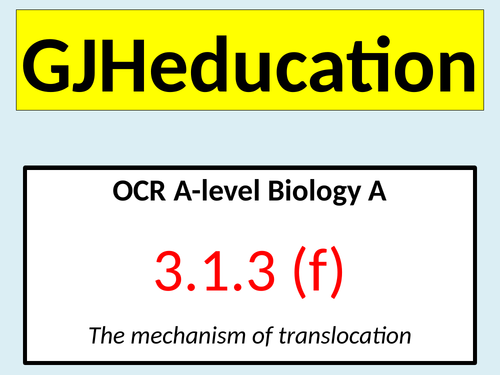



This lesson describes the active loading of assimilates like sucrose at the source and the translocation along the phloem to the sink. Both the detailed PowerPoint and accompanying resources have been designed to cover point 3.1.3 (f) of the OCR A-level Biology A specification.
The lesson begins by challenging the students to recognise the key term translocation when it is partially revealed and then the rest of the lesson focuses on getting them to understand how this process involves the mass flow of assimilates down the hydrostatic pressure gradient from the source to the sink. It has been written to tie in with 3.1.3 (b) where the structure of the phloem tissue was initially introduced and the students are continually challenged on this prior knowledge. A step-by-step guide is used to describe how sucrose is loaded into the phloem at the source by the companion cells. Time is taken to discuss key details such as the proton pumping to create the proton gradient and the subsequent movement back into the cells by facilitated diffusion using co-transporter proteins. Students will learn that the hydrostatic pressure at the source is high, due to the presence of the water and sucrose as cell sap, and that this difference when compared to the lower pressure at the sink leads to the movement along the phloem.
A number of quick quiz rounds are included in the lesson to maintain engagement and to introduce key terms and the lesson concludes with a game of SOURCE or SINK as students have to identify whether a particular plant structure is one or the other (or both)
Get this resource as part of a bundle and save up to 33%
A bundle is a package of resources grouped together to teach a particular topic, or a series of lessons, in one place.
Something went wrong, please try again later.
This resource hasn't been reviewed yet
To ensure quality for our reviews, only customers who have purchased this resource can review it
Report this resourceto let us know if it violates our terms and conditions.
Our customer service team will review your report and will be in touch.